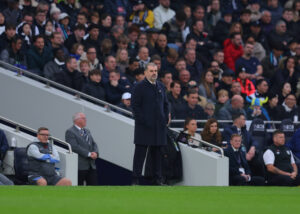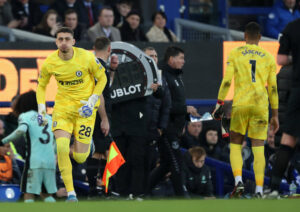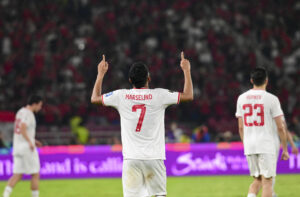Crystal Palace announced the appointment of Dutchman Frank de Boer as their new manager in June, much to the delight of several supporters. The Eagles have struggled to have a long-term option at the helm with the likes of Ian Holloway, Tony Pulis and Sam Allardyce, amongst others, taking charge of the club since they regained Premier League status in 2013. The 47-year-old could be the manager they need for the long-run and his CV so far suggests he could make Palace a highly competitive side once again.
Career
The former Netherlands international has had a fine managerial career so far, having started off his senior management career as the assistant to Bert van Marwijk during the 2010 FIFA World Cup where Netherlands finished as runners-up. After that, he led his boyhood club Ajax to four successive league titles between 2011 and 2014.
His first stint away from Netherlands with Inter Milan, although that proved to be a largely forgettable one and lasted just 84 days, though he claims he deserved more time and that the Milan side’s management was poor.
Now in South London, de Boer will hope to reignite his managerial career. Honed by the prestigious education provided by a Johan Cruyff-inspired Ajax, de Boer is expected to bring a more fluid and fast brand of attacking football to the club, which could contradict the direct approach by some of the club’s other previous managers like Allardyce, Pulis and Neil Warnock. He has already proven how good he is with Ajax, and with the players he currently has at his new club, his style and merit should be able to bring out the best in them.
Style
Frank de Boer’s management style at Ajax had him relying heavily on his wingers in the side’s famous 4-3-3 formation. His system tended to have Ajax build from the back with patient, crisp passing to create space with the intention of forcing the ball out wide to the wingers to create chances. It was a tactic used frequently to bring the club success as they were the dominant force in Netherlands. This also required effective full-backs, as they constantly made overlapping runs to support their attacking team-mates and create maximum danger in the opposition box.
The system isn’t too direct, unlike the traditional style in England, and required midfielders who could play a pass very well in order to spread out play. In Ajax’s case at the time, it was Davy Klaasen who was a key component in midfield and he was at heart of it, supported most frequently by Riechedly Bazoer and Thulani Sorero. The same can be expected at Crystal Palace, except this time, it will be Luca Milivojevic at the heart, with Yohan Cabaye and Ruben Loftus-Cheek taking the other two midfield roles.
Problems
Frank de Boer was often criticised for lacking flexibility in his management style, but he did switch to a three-at-the-back system when he took over at Inter: a plan which subsequently failed. He has used this formation with Palace in pre-season, with mixed results.
His current full-back options, Patrick van Aanholt on the left and Joel Ward on the right, would contradict his new system with their inconsistencies on the pitch; van Aanholt has always been unreliable in defence and Ward isn’t as good on the ball while driving forward.
His options at the centre of defence may need strengthening, too. The club have been linked to Jairo Riedewald this summer, but their existing choices, Damien Delaney and Scott Dann, have both struggled with injuries and consistency. The club will need to add several reinforcements if they want to use this formation. Failing this, they will likely go into the season with de Boer’s tried and tested 4-3-3 system, which has been core to his success so far.
Counter-attacks
Another aspect of de Boer’s tactical success at home in the Netherlands was the speed at which Ajax countered their opponents. Again, he relied heavily on his wingers for this, and this direct method often caught the opposition off guard. In order to transition quickly from defence to attack, de Boer had his players playing more forward, vertical passes to exploit the opposition defence, which would be unorganised as they themselves were trying to attack moments prior. The directness was mostly caused through crisp, quick passes in order to move the ball higher up the pitch as quickly as possible.
Crystal Palace already possess a few explosive wingers in the forms of Wilfried Zaha, Andros Townsend and Jason Puncheon and they are likely to be the biggest beneficiaries of de Boer’s arrival. Zaha and Townsend in particular, two fine crossers, will have plenty to do when the manager implements his ideas. The likely forward trident of Christian Benteke and those two will have a major influence in the club’s goal tally for the upcoming season.
In addition to their goal scoring, the trio up front could be asked to press intensely to unsettle opposition defences and reduce pressure on their team-mates behind them. This worked really well when de Boer was at Ajax with players like Ricardo Kishna, Arkadiusz Milik and Anwar El Ghazi being asked to evolve from their usual style.
Luka Milivojević
A key player for Crystal Palace this season will be 26-year-old Luka Milivojević, who signed in the January transfer window from Greek champions Olympiacos. A player with an immense defensive aptitude, he will be a crucial off-the-ball tool for Frank de Boer. His ability to read the game and intercept danger means he will be the main man in midfield in the defensive phase.
The side’s strongest midfield options are Milivojević, Loftus-Cheek and Yohan Cabaye Loftus-Cheek—the latter of whom could easily fit in as a number 10 in a 4-2-3-1—who will be well supported by Zaha, Townsend and Benteke. The defence must be strengthened, but Crystal Palace look set for an exciting era in their relatively short Premier League history with a brand of football that has been a rarity at their club.
Main Photo






